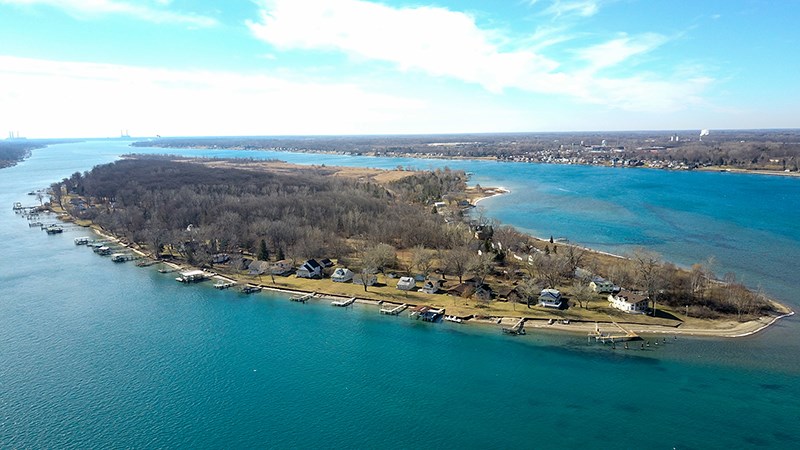Troy Shantz and George Mathewson
The balmy temperatures and remarkably ice-free waters around Sarnia this winter may have people smiling, but they could signal trouble ahead for some crops and wildlife, officials say.
An early spring in 2012 followed by a hard frost wiped out 80% of the apple crop and 90% of the cherry crop in Ontario. Peaches, apricots and pears were also impacted, forcing vendors to rely on expensive imports.
John DeGroot of DeGroot’s Nursery said he’s already heard “rumblings” of concern about a repeat from fruit farmers in Reece’s Corners and Camlachie.
“Peaches … are always a big concern,” he said.
“They respond very, very quickly, as soon as the sun shines and as soon as they get some moisture in the ground.
“Then all of a sudden they start coming out in bud and leaf. Then we get a ridiculous cold snap and those poor buds freeze,” he said.
“It doesn’t kill the tree (but) it often negatively affects the crop.”
On the upside, a string of record-setting warm days has people outdoors and active early, and ornamental garden plants aren’t harmed by the sudden temperature swings, he added.
The waters around Sarnia have been largely free of ice this winter, giving adventurous kayakers and paddleboarders an early jump on the season. February even produced the unexpected sight of bikini-clad sunbathers on Canatara Beach.
But the lack of ice can also have environmental consequences, said George Leshkevich, a research scientist with U.S. National Oceanic and Atmospheric Administration.
Native Great Lakes whitefish, for example, rely on ice cover to protect their shallow spawning beds from winter storms, he said.
And Lake Huron’s largely open 6,157-kilometre coastline allows the darker water to absorb more sunshine. That warms the surrounding air and helps trigger plants and fruit trees to bloom early, making them susceptible to frost, he said.
Just 8.3% of the Great Lakes were covered by ice on Feb. 22. That compares to 12.6% on the same date in 2016 and 84.4% in 2015, a winter in which the lakes nearly froze over entirely, according to NOAA.
The maximum winter ice cover has averaged about 55% since record keeping began in 1973, said Leshkevich, who works at the Great Lakes Environmental Research laboratory in Ann Arbor, Michigan.
Though the percentage fluctuates considerably each year it’s been in overall decline since 1998. No one in the scientific community knows why for certain but climate change is likely a factor, he added.
“We’re seeing that on pretty much all the lakes, including Superior.”
The lowest ice coverage on record was 9.5% in 2002, and the maximum was in 1979, when 94.7% of the Great Lakes froze over.
